When it comes to business, the bottom line is always the bottom line. According to numerous studies, the cost of workplace substance abuse affects companies’ bottom line to the tune of billions of dollars annually.[i] [ii] To ignore the problem and not conduct drug testing would not be a wise business decision. Yes, drug testing is a business expense, but one that can result in a positive return on investment (ROI) for employers.
Your business’s operations and reputation are built on certainty—knowing that your people can deliver on demanding projects and meet rigorous requirements. Quest Diagnostics Employer Solutions[iii] provides comprehensive and flexible drug testing options designed to support employer drug-free workplace policies.
We also offer a valuable, easy-to-use online Drug Testing Savings Calculator[iv] to help any employer from virtually any industry make sense of how drug testing can result in a positive ROI. This innovative tool walks you through how to calculate your potential drug testing program savings and data highlighting possible returns on your company’s investment.
Yes! Drug testing works
It has been more than 30 years since the enactment of the Omnibus Transportation Employee Testing Act of 1991, the law that requires drug and alcohol testing of certain safety-sensitive employees in the transportation industry, such as truck drivers and airline pilots. In those early days of drug testing, many employers wanted to know if drug testing could help them achieve safer and more productive workplaces.
Since that time, employers have conducted tens of millions of government-mandated and non-mandated drug tests per year, effectively answering those questions with a resounding “Yes!” Drug testing works! In fact, the federal government promotes the idea that workplace drug testing prevents and deters worker drug use[v] and there are many studies that support this fact.[vi]
That said, sometimes the numbers can get a little complicated. What does substance abuse in the workplace really cost and how does that compare to the cost of a comprehensive drug-free workplace program that includes drug testing? This Drug Testing Savings Calculator can help you make sense of all the pertinent numbers.
Workplace drug testing remains a valuable tool for employers. The analysis of 2021 trends presented in the Drug Testing Index reveals that positive drug test results overall increased in 2021, underscoring the need for comprehensive drug-free workplace programs.
What the numbers say
Before we crunch some numbers, let’s review some important statistics. We’re going to refer to a lot of numbers, so to help keep it all straight we’ll present the information in question-and-answer format:
Let’s start with the magnitude of the drug problem. How many people use drugs?
- According to an annual report from the federal government there are 59.3 million Americans 12 and older who admit to using illicit drugs.[vii]
- Additionally, 138.5 million people admit to being current alcohol users with 61.6 million being classified as “binge” drinkers (5 or more drinks on at least 1 occasion in the past month) and 17.7 million being heavy drinkers (5 or more drinks on at least 5 occasions in the past month).[viii]
How many drug users are employed? The National Safety Council reported at the end of 2020 that 75% of “people with a substance abuse disorder are employed.”[ix] That equates to about 15% of the workforce.
Which industries are affected the most? It is important to understand that all industries, including transportation, construction, manufacturing, and professional/scientific/technical workplaces, for example, are affected by substance abuse, some more than others. According to a report from the Substance Abuse and Mental Health Services Administration (SAMHSA),[x] the following industries are the 5 with the highest rates of worker substance abuse:
- Mining at 17.5%
- Construction at 16.5%
- Accommodations and food services at 11.8%
- Arts, entertainment, and recreation at 11.5%
- Utilities at 10.3%
How many use drugs at work? A survey of employees conducted by American Addiction Centers found that 22.5% of employees admit to using drugs or alcohol at work, with 14.7% of at-home workers and 3.3% of those who go to a workplace admitting to being “high” on the job every week.[xi]
How is this affecting workforce trends? According to the 2022 Quest Diagnostics Drug Testing Index® (DTI), an annual report based on the results of more than 6 million drug tests conducted at Quest laboratories, the “rate of positive drug test results among America’s workforce reached its highest rate last year [2021] since 2001 and was up more than 30% in the combined US workforce (mandated and non-mandated situations) from an all-time low in 2010-2012.”[xii]
Has the pandemic had an impact? “Nearly one-third of people in the US who drink alcohol have increased their consumption since the pandemic began,” according to a May study by LifeWorks and the Hazelden Betty Ford Foundation. “Nearly 30 percent who use drugs reported an increase in that activity.”[xiii]
What does this cost employers? According to the findings from a study conducted by NORC at the University of Chicago and the National Safety Council (NSC), each substance abusing employee costs his or her company an average of $8,817 annually.[xiv]
Okay, those are a lot of numbers. What’s the bottom line? Simply put, every industry is affected by substance abuse, many employees are using drugs on the job or admit to being under the influence while working, positive drug results have increased significantly in recent years, and substance abuse costs employers a lot of money annually. Using the numbers presented above, if 15% of your workforce are substance abusers and you have 100 employees, then you have 15 substance abusers on your payroll. If each of them is costing your company an average of $8,817, then substance abuse is costing your company approximately $132,255 annually.
That’s a simple calculation. In reality, there’s a lot more that can be factored into measuring your drug testing ROI such as your industry, your state location, applicable state drug testing laws, and the level of liability held in any one position within your company from front-line to C-suite.
The Quest ROI Calculator
Substance abuse can negatively impact job performance in different ways. As a result, employers conduct drug testing for many reasons, including to comply with legal requirements, improve safety, lower accident rates, control the costs of workers’ compensation insurance, and increase productivity. Additionally, though it may be difficult to gauge the direct cost of substance abuse on a company’s reputation and employee morale, those are 2 key factors that can be positively affected by maintaining a drug testing program.
The Drug Testing Savings Calculator takes the guess work out of trying to determine a precise return on investment for drug testing. The key to a good ROI calculation is to keep it simple, user friendly, and quick. Our tool accomplishes all 3 of these objectives.
Here’s what you’ll need to know to get started:
- Number of employees in your company
- Turnover rates
- Median salaries
- Workers’ compensation coverage
The second part of the calculator asks for information about your drug testing program, such as specimen types, number of employees tested, whether you conduct pre-employment and/or random testing, and positivity rates.
Finally, you’ll be asked to estimate how much you spend on recruitment and training as well as drug testing. Based on the information you entered, the Drug Testing Savings Calculator will yield an ROI figure (dollars saved for every dollar spent on drug testing).
Specific savings are shown in 4 cost categories:
- Recruiting and training savings
- Lower absenteeism
- Fewer accidents
- Lower workers’ compensation insurance
At the end of the calculation, you’ll have the opportunity to view specific suggestions for how your company can maximize the value of its drug testing program, help reduce costs, and improve detection.
Here’s the bottom line…
When it comes to your business and the effects of substance abuse in the workplace, there’s a lot at stake, including your company’s productivity, profitability, and reputation. You need to be certain your drug-free workplace program will achieve its objectives. Our drug screening programs meet your need for certainty today with the flexibility to evolve as your requirements change, without compromise.
As the drug testing industry leader, Quest Diagnostics Employer Solutions can help your company develop, maintain, and enhance a drug testing program that will give you a competitive advantage and help maintain a reputation as a safe, productive, and desirable place to work.
[i] Drug Abuse Costs Employers $81 Billion Per Year. EHS Today. March 2014. https://www.ehstoday.com/health/article/21916172/drug-abuse-costs-employers-81-billion-per-year
[ii] What To Know About the Cost of Substance Abuse in the Workplace. Choice House. March 2022. https://www.choicehousecolorado.com/what-to-know-about-the-cost-of-substance-abuse-in-the-workplace/
[iii] Quest Diagnostics Employer Solutions. Drug Testing Index | Quest Diagnostics
[iv] Drug Testing Savings Calculator. Quest Diagnostics. https://www.drugtestingroi.com/
[v] Drug Testing Resources. Substance Abuse and Mental Health Services Administration (SAMHSA). https://www.samhsa.gov/workplace/resources/drug-testing
[vi] Workplace Drug Testing and Worker Drug Use. National Library of Medicine. April 2007. https://www.ncbi.nlm.nih.gov/pmc/articles/PMC1955359/
[vii] National Survey on Drug Use and Health. Substance Abuse and Mental Health Services Administration (SAMHSA). October 2021. https://www.samhsa.gov/newsroom/press-announcements/202110260320
[viii] National Survey on Drug Use and Health.
[ix] Substance Use Costs Your Workplace More Than You Think. National Safety Council. December 2020. https://www.nsc.org/safety-first/substance-use-costs-your-workplace-more-than-you-t
[x] Substance Use and Substance Use Disorder by Industry. SAMHSA. April 2015. https://www.samhsa.gov/data/sites/default/files/report_1959/ShortReport-1959.pdf
[xi] The Prevalence of Substance Abuse in the Workplace. American Addiction Centers. May 2022. https://drugabuse.com/addiction/substance-abuse-workplace/
[xii] Workforce Drug Test Positivity Climbs to Highest Level in Two Decades, Finds Quest Diagnostics Drug Testing Index Analysis. March 2022. https://newsroom.questdiagnostics.com/2022-03-30-Workforce-Drug-Test-Positivity-Climbs-to-Highest-Level-in-Two-Decades,-Finds-Quest-Diagnostics-Drug-Testing-Index-Analysis
[xiii] Companies Are Slowly Addressing Employees’ Substance Use Disorders. Society for Human Resource Management. HR Magazine. Fall 2021. https://www.shrm.org/hr-today/news/hr-magazine/fall2021/pages/substance-abuse-increased-during-the-pandemic.aspx
[xiv] New analysis: employers stand to save an average of $8,500 for supporting each employee in recovery from a substance use disorder. Report of the National Safety Council and NORC at the University of Chicago. National Safety Council website. Published December 2, 2020. https://www.nsc.org/newsroom/new-analysis-employers-stand-to-save-an-average-of
 Your Privacy Choices
|
Privacy Notices
|
Terms
|
Language Assistance / Non-Discrimination Notice | Asistencia de Idiomas / Aviso de no Discriminación | 語言協助 / 不䈚視通知
Your Privacy Choices
|
Privacy Notices
|
Terms
|
Language Assistance / Non-Discrimination Notice | Asistencia de Idiomas / Aviso de no Discriminación | 語言協助 / 不䈚視通知
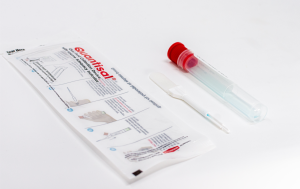
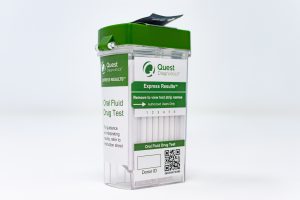
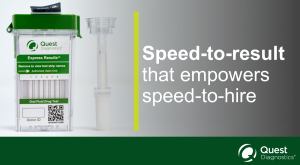
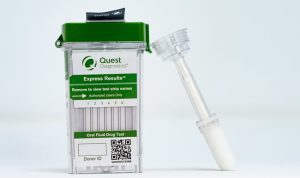


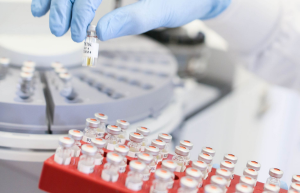

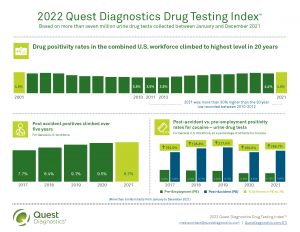










When it comes to business, the bottom line is always the bottom line. According to numerous studies, the cost of workplace substance abuse affects companies’ bottom line to the tune of billions of dollars annually.[i] [ii] To ignore the problem and not conduct drug testing would not be a wise business decision. Yes, drug testing is a business expense, but one that can result in a positive return on investment (ROI) for employers.
Your business’s operations and reputation are built on certainty—knowing that your people can deliver on demanding projects and meet rigorous requirements. Quest Diagnostics Employer Solutions[iii] provides comprehensive and flexible drug testing options designed to support employer drug-free workplace policies.
We also offer a valuable, easy-to-use online Drug Testing Savings Calculator[iv] to help any employer from virtually any industry make sense of how drug testing can result in a positive ROI. This innovative tool walks you through how to calculate your potential drug testing program savings and data highlighting possible returns on your company’s investment.
Yes! Drug testing works
It has been more than 30 years since the enactment of the Omnibus Transportation Employee Testing Act of 1991, the law that requires drug and alcohol testing of certain safety-sensitive employees in the transportation industry, such as truck drivers and airline pilots. In those early days of drug testing, many employers wanted to know if drug testing could help them achieve safer and more productive workplaces.
Since that time, employers have conducted tens of millions of government-mandated and non-mandated drug tests per year, effectively answering those questions with a resounding “Yes!” Drug testing works! In fact, the federal government promotes the idea that workplace drug testing prevents and deters worker drug use[v] and there are many studies that support this fact.[vi]
That said, sometimes the numbers can get a little complicated. What does substance abuse in the workplace really cost and how does that compare to the cost of a comprehensive drug-free workplace program that includes drug testing? This Drug Testing Savings Calculator can help you make sense of all the pertinent numbers.
Workplace drug testing remains a valuable tool for employers. The analysis of 2021 trends presented in the Drug Testing Index reveals that positive drug test results overall increased in 2021, underscoring the need for comprehensive drug-free workplace programs.
What the numbers say
Before we crunch some numbers, let’s review some important statistics. We’re going to refer to a lot of numbers, so to help keep it all straight we’ll present the information in question-and-answer format:
Let’s start with the magnitude of the drug problem. How many people use drugs?
How many drug users are employed? The National Safety Council reported at the end of 2020 that 75% of “people with a substance abuse disorder are employed.”[ix] That equates to about 15% of the workforce.
Which industries are affected the most? It is important to understand that all industries, including transportation, construction, manufacturing, and professional/scientific/technical workplaces, for example, are affected by substance abuse, some more than others. According to a report from the Substance Abuse and Mental Health Services Administration (SAMHSA),[x] the following industries are the 5 with the highest rates of worker substance abuse:
How many use drugs at work? A survey of employees conducted by American Addiction Centers found that 22.5% of employees admit to using drugs or alcohol at work, with 14.7% of at-home workers and 3.3% of those who go to a workplace admitting to being “high” on the job every week.[xi]
How is this affecting workforce trends? According to the 2022 Quest Diagnostics Drug Testing Index® (DTI), an annual report based on the results of more than 6 million drug tests conducted at Quest laboratories, the “rate of positive drug test results among America’s workforce reached its highest rate last year [2021] since 2001 and was up more than 30% in the combined US workforce (mandated and non-mandated situations) from an all-time low in 2010-2012.”[xii]
Has the pandemic had an impact? “Nearly one-third of people in the US who drink alcohol have increased their consumption since the pandemic began,” according to a May study by LifeWorks and the Hazelden Betty Ford Foundation. “Nearly 30 percent who use drugs reported an increase in that activity.”[xiii]
What does this cost employers? According to the findings from a study conducted by NORC at the University of Chicago and the National Safety Council (NSC), each substance abusing employee costs his or her company an average of $8,817 annually.[xiv]
Okay, those are a lot of numbers. What’s the bottom line? Simply put, every industry is affected by substance abuse, many employees are using drugs on the job or admit to being under the influence while working, positive drug results have increased significantly in recent years, and substance abuse costs employers a lot of money annually. Using the numbers presented above, if 15% of your workforce are substance abusers and you have 100 employees, then you have 15 substance abusers on your payroll. If each of them is costing your company an average of $8,817, then substance abuse is costing your company approximately $132,255 annually.
That’s a simple calculation. In reality, there’s a lot more that can be factored into measuring your drug testing ROI such as your industry, your state location, applicable state drug testing laws, and the level of liability held in any one position within your company from front-line to C-suite.
The Quest ROI Calculator
Substance abuse can negatively impact job performance in different ways. As a result, employers conduct drug testing for many reasons, including to comply with legal requirements, improve safety, lower accident rates, control the costs of workers’ compensation insurance, and increase productivity. Additionally, though it may be difficult to gauge the direct cost of substance abuse on a company’s reputation and employee morale, those are 2 key factors that can be positively affected by maintaining a drug testing program.
The Drug Testing Savings Calculator takes the guess work out of trying to determine a precise return on investment for drug testing. The key to a good ROI calculation is to keep it simple, user friendly, and quick. Our tool accomplishes all 3 of these objectives.
Here’s what you’ll need to know to get started:
The second part of the calculator asks for information about your drug testing program, such as specimen types, number of employees tested, whether you conduct pre-employment and/or random testing, and positivity rates.
Finally, you’ll be asked to estimate how much you spend on recruitment and training as well as drug testing. Based on the information you entered, the Drug Testing Savings Calculator will yield an ROI figure (dollars saved for every dollar spent on drug testing).
Specific savings are shown in 4 cost categories:
At the end of the calculation, you’ll have the opportunity to view specific suggestions for how your company can maximize the value of its drug testing program, help reduce costs, and improve detection.
Here’s the bottom line…
When it comes to your business and the effects of substance abuse in the workplace, there’s a lot at stake, including your company’s productivity, profitability, and reputation. You need to be certain your drug-free workplace program will achieve its objectives. Our drug screening programs meet your need for certainty today with the flexibility to evolve as your requirements change, without compromise.
As the drug testing industry leader, Quest Diagnostics Employer Solutions can help your company develop, maintain, and enhance a drug testing program that will give you a competitive advantage and help maintain a reputation as a safe, productive, and desirable place to work.
[i] Drug Abuse Costs Employers $81 Billion Per Year. EHS Today. March 2014. https://www.ehstoday.com/health/article/21916172/drug-abuse-costs-employers-81-billion-per-year
[ii] What To Know About the Cost of Substance Abuse in the Workplace. Choice House. March 2022. https://www.choicehousecolorado.com/what-to-know-about-the-cost-of-substance-abuse-in-the-workplace/
[iii] Quest Diagnostics Employer Solutions. Drug Testing Index | Quest Diagnostics
[iv] Drug Testing Savings Calculator. Quest Diagnostics. https://www.drugtestingroi.com/
[v] Drug Testing Resources. Substance Abuse and Mental Health Services Administration (SAMHSA). https://www.samhsa.gov/workplace/resources/drug-testing
[vi] Workplace Drug Testing and Worker Drug Use. National Library of Medicine. April 2007. https://www.ncbi.nlm.nih.gov/pmc/articles/PMC1955359/
[vii] National Survey on Drug Use and Health. Substance Abuse and Mental Health Services Administration (SAMHSA). October 2021. https://www.samhsa.gov/newsroom/press-announcements/202110260320
[viii] National Survey on Drug Use and Health.
[ix] Substance Use Costs Your Workplace More Than You Think. National Safety Council. December 2020. https://www.nsc.org/safety-first/substance-use-costs-your-workplace-more-than-you-t
[x] Substance Use and Substance Use Disorder by Industry. SAMHSA. April 2015. https://www.samhsa.gov/data/sites/default/files/report_1959/ShortReport-1959.pdf
[xi] The Prevalence of Substance Abuse in the Workplace. American Addiction Centers. May 2022. https://drugabuse.com/addiction/substance-abuse-workplace/
[xii] Workforce Drug Test Positivity Climbs to Highest Level in Two Decades, Finds Quest Diagnostics Drug Testing Index Analysis. March 2022. https://newsroom.questdiagnostics.com/2022-03-30-Workforce-Drug-Test-Positivity-Climbs-to-Highest-Level-in-Two-Decades,-Finds-Quest-Diagnostics-Drug-Testing-Index-Analysis
[xiii] Companies Are Slowly Addressing Employees’ Substance Use Disorders. Society for Human Resource Management. HR Magazine. Fall 2021. https://www.shrm.org/hr-today/news/hr-magazine/fall2021/pages/substance-abuse-increased-during-the-pandemic.aspx
[xiv] New analysis: employers stand to save an average of $8,500 for supporting each employee in recovery from a substance use disorder. Report of the National Safety Council and NORC at the University of Chicago. National Safety Council website. Published December 2, 2020. https://www.nsc.org/newsroom/new-analysis-employers-stand-to-save-an-average-of